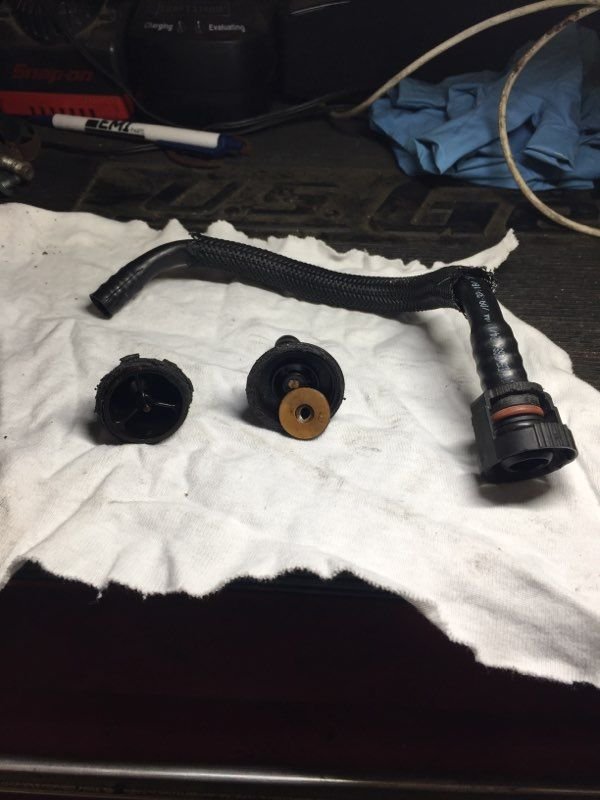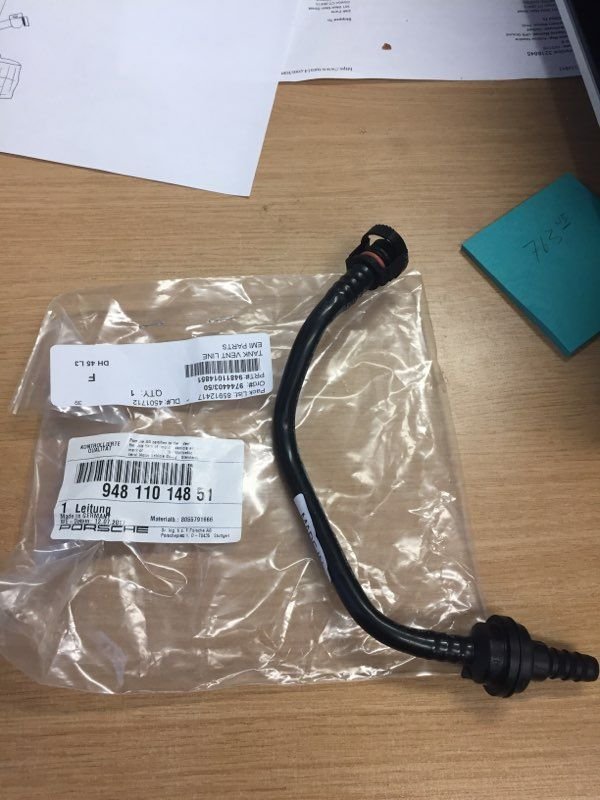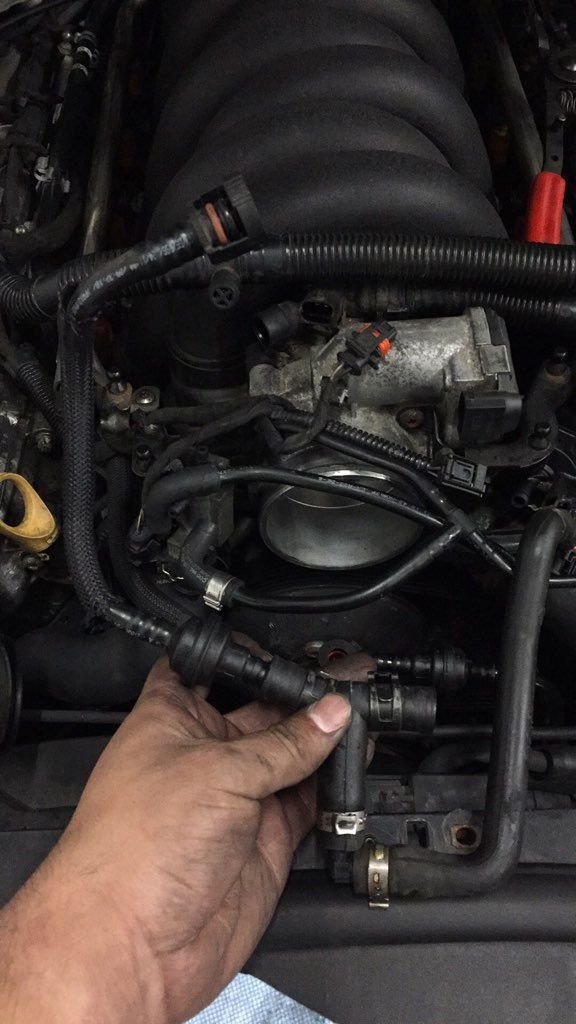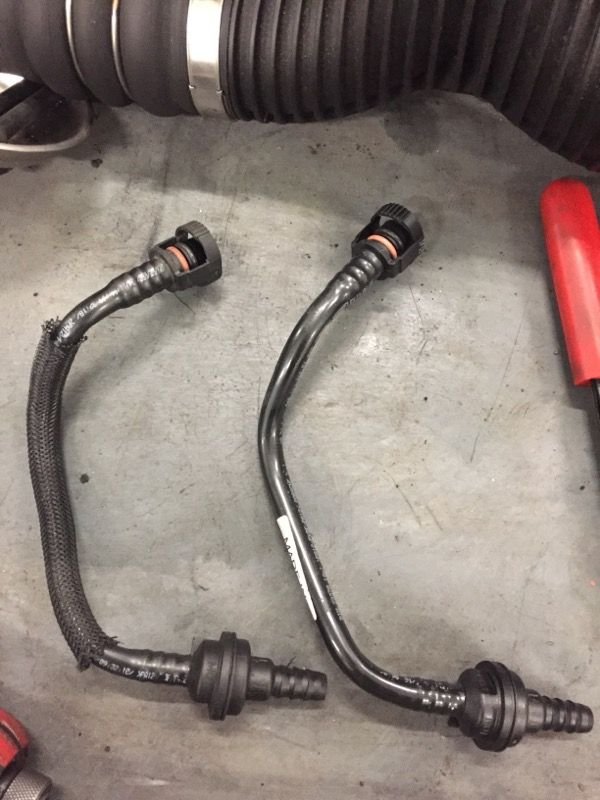2005 Turbo-Very rough idle and oily plugs on passenger side
#1
Well, replaced fuel pumps, plugs and coils and still runs as if it is missing 4 cylinders. No change in running with new plugs and coils. We are doing a compression test on passenger side to see if anything is up with that side.
A little background. 155,000 miles, drove 550 miles down from DC to SC and ran fine, drove it a couple of days and started rough idle, checked fuel pumps and determined need to replace. Battery went dead when wife left key in it and didn't start it again since then. Put new battery in and started right up but with rough idle, new pumps, changed plugs, coils, air filters and oil change and still idles rough. Any help would be greatly appreciated since I don't want to keep chasing and throwing parts at it. Please help my focus a little bit.
Thanks, Tim from SC
A little background. 155,000 miles, drove 550 miles down from DC to SC and ran fine, drove it a couple of days and started rough idle, checked fuel pumps and determined need to replace. Battery went dead when wife left key in it and didn't start it again since then. Put new battery in and started right up but with rough idle, new pumps, changed plugs, coils, air filters and oil change and still idles rough. Any help would be greatly appreciated since I don't want to keep chasing and throwing parts at it. Please help my focus a little bit.
Thanks, Tim from SC
#2
Not to scare you, but this sounds like a potential bore scoring case. So you are saying the new plugs are already oily or the old ones were? Don't do any more work on this vehicle until you check the compression and scope the cylinders while you are at it. Does it knock?
#5
Passenger side, front to back: 125, 110, 110, 115
Driver side, front to back: 125, 130, 110, 140
Bore scope didn't reveal any scoring or any valve to piston contact in any of the cylinders. Can these engines jump time? The low compression numbers would prove out on the performance side but should still run okay. I never saw any blow by or smoke on start up. Kind of a mystery. Now trying to decide how to proceed. I don't want to do a bunch of labor intensive disassembly to make it run and still have low compression and power when I could spend the same money and find a wrecked low mileage car and swap engines. What say the experts?
Tim
Driver side, front to back: 125, 130, 110, 140
Bore scope didn't reveal any scoring or any valve to piston contact in any of the cylinders. Can these engines jump time? The low compression numbers would prove out on the performance side but should still run okay. I never saw any blow by or smoke on start up. Kind of a mystery. Now trying to decide how to proceed. I don't want to do a bunch of labor intensive disassembly to make it run and still have low compression and power when I could spend the same money and find a wrecked low mileage car and swap engines. What say the experts?
Tim
#6
Those numbers would be enough to concern me. I think it comes down to where on the labor/money curve range you want to land.
Is it still driveable or is it running too poorly to put any more miles on it?
Do you happen to have the oil that you pulled from it and know how many miles were on that change? I think a blackstone oil analysis could be helpful, but the results might be off a little since you really should pull the oil sample mid-flow.
Do you have any history or maintenance records on the car?
Can you post a video of idling?
Can you listen closely for any piston slapping/knocking?
If you are going to run a Cayenne DIY for any period of a time a good scanner is a tool you will need. These engines have a timing chain and other than some rare reports, it is generally not an issue compared to other engines.
Is it still driveable or is it running too poorly to put any more miles on it?
Do you happen to have the oil that you pulled from it and know how many miles were on that change? I think a blackstone oil analysis could be helpful, but the results might be off a little since you really should pull the oil sample mid-flow.
Do you have any history or maintenance records on the car?
Can you post a video of idling?
Can you listen closely for any piston slapping/knocking?
If you are going to run a Cayenne DIY for any period of a time a good scanner is a tool you will need. These engines have a timing chain and other than some rare reports, it is generally not an issue compared to other engines.
#7
Passenger side, front to back: 125, 110, 110, 115
Driver side, front to back: 125, 130, 110, 140
Bore scope didn't reveal any scoring or any valve to piston contact in any of the cylinders. Can these engines jump time? The low compression numbers would prove out on the performance side but should still run okay. I never saw any blow by or smoke on start up. Kind of a mystery. Now trying to decide how to proceed. I don't want to do a bunch of labor intensive disassembly to make it run and still have low compression and power when I could spend the same money and find a wrecked low mileage car and swap engines. What say the experts?
Tim
Driver side, front to back: 125, 130, 110, 140
Bore scope didn't reveal any scoring or any valve to piston contact in any of the cylinders. Can these engines jump time? The low compression numbers would prove out on the performance side but should still run okay. I never saw any blow by or smoke on start up. Kind of a mystery. Now trying to decide how to proceed. I don't want to do a bunch of labor intensive disassembly to make it run and still have low compression and power when I could spend the same money and find a wrecked low mileage car and swap engines. What say the experts?
Tim
In addition to being low, there is a big variation there 110 to 140. That's not good. Are you confident in the testing - so if you ran the test again, would you get exactly the same numbers, or +/-20, or ...?
For my 2004 S (not turbo, ~60k miles on this engine), when I did my PPI, here are the numbers I got: 200-195-195-195-195-190-190-195
I know a turbo should be lower, but not as low as you're getting.
Trending Topics
#8
The compression should be north of 140-145 in every cylinder to be strong. My mechanic did his due diligence looking everything over with compression check, bore scoping and using a small mirror to see the underside of the valves in each cylinder. He still thinks it could have jumped time but even if we pursue that avenue, I would still have low compression on almost every cylinder. I am going to rethink and plan my attack after Christmas break so I don't fret about it during vacation at Disney with the family.
#9
One consideration with doing a compression test on a modern car - the throttle plate isn't open. On carb'd cars it was always practice to jam open the carb throttle plate(s) so there wasn't a restriction on intake airflow. About the only way I can think of to do this on a modern car is either look for a fitting going into the intake manifold that can be opened up, or manually opening the throttle plate, or remove the electronic throttle body from the intake.
I know when I forgot to do the open-throttle on old carb cars - low pressure and erratic pressure readings were the result.
I know when I forgot to do the open-throttle on old carb cars - low pressure and erratic pressure readings were the result.
#10
According to the Porsche specs, for the 4.5L turbo, the wear limit is 7.5bar (108psi) and no cylinder should be 3 bar (43psi) different than the others.
Compression should be tested with a warmed up engine, and with the throttle fully open.
Compression specs will differ with altitude.
Double check your vacuum lines as I said. I knocked the charcoal canister hose loose while checking the plugs and coils, and my 2004 Turbo ran like complete ****! It had a very erratic idle, super lumpy, the whole car was shaking violently. I thought it had scored the cylinders. It sounded like rod knock, and cam tappet noise all rolled in one. Connected that hose and the engine ran fine.
Compression should be tested with a warmed up engine, and with the throttle fully open.
Compression specs will differ with altitude.
Double check your vacuum lines as I said. I knocked the charcoal canister hose loose while checking the plugs and coils, and my 2004 Turbo ran like complete ****! It had a very erratic idle, super lumpy, the whole car was shaking violently. I thought it had scored the cylinders. It sounded like rod knock, and cam tappet noise all rolled in one. Connected that hose and the engine ran fine.
#11
According to the Porsche specs, for the 4.5L turbo, the wear limit is 7.5bar (108psi) and no cylinder should be 3 bar (43psi) different than the others.
Compression should be tested with a warmed up engine, and with the throttle fully open.
Compression specs will differ with altitude.
Double check your vacuum lines as I said. I knocked the charcoal canister hose loose while checking the plugs and coils, and my 2004 Turbo ran like complete ****! It had a very erratic idle, super lumpy, the whole car was shaking violently. I thought it had scored the cylinders. It sounded like rod knock, and cam tappet noise all rolled in one. Connected that hose and the engine ran fine.
Compression should be tested with a warmed up engine, and with the throttle fully open.
Compression specs will differ with altitude.
Double check your vacuum lines as I said. I knocked the charcoal canister hose loose while checking the plugs and coils, and my 2004 Turbo ran like complete ****! It had a very erratic idle, super lumpy, the whole car was shaking violently. I thought it had scored the cylinders. It sounded like rod knock, and cam tappet noise all rolled in one. Connected that hose and the engine ran fine.
Best
Julian







#12
Wanted to give an update and thanks to all that tried to help diagnose my CTT's problems. I did replace fuel pumps, plugs, coils, battery, air filters and oil change. After all that, I was still experiencing poor idle and fouled spark plugs on the passenger side. We did a compression check and bore scoped all cylinders to find nothing. Although the compression was a little down, there wasn't any indication of scored cylinders. I finally stopped putting money into chasing from one thing to another and took the family to Disney World during Christmas break.
I got back with some fresh eyes and a different mechanic with Porsche experience. They figured out that the tubes going from the turbos into the air filtration system were bad which also included the air-oil separator system. Once that was fixed the spark plugs stayed clean and the engine idles smoothly. The next issue ended up costing a lot more. My battery kept draining and was attributed to the left auxiliary cooling fan and found the right one was getting ready to go, so had both of those replaced and is now running pretty good for a vehicle with 156,500 miles.
Hopefully I will be able to enjoy for a little while longer as I detail it and get ready to sell. I like driving it but would rather put a stroker kit in my Charger SRT so need the funds to do that. It has been an adventure and can say that I owned one of those cool Turbo Porsches once.
Thank you again for all the great advice and maybe I'll own another one some day (just with lower miles and maybe a GTS)!
Tim from Greenville, SC
I got back with some fresh eyes and a different mechanic with Porsche experience. They figured out that the tubes going from the turbos into the air filtration system were bad which also included the air-oil separator system. Once that was fixed the spark plugs stayed clean and the engine idles smoothly. The next issue ended up costing a lot more. My battery kept draining and was attributed to the left auxiliary cooling fan and found the right one was getting ready to go, so had both of those replaced and is now running pretty good for a vehicle with 156,500 miles.
Hopefully I will be able to enjoy for a little while longer as I detail it and get ready to sell. I like driving it but would rather put a stroker kit in my Charger SRT so need the funds to do that. It has been an adventure and can say that I owned one of those cool Turbo Porsches once.
Thank you again for all the great advice and maybe I'll own another one some day (just with lower miles and maybe a GTS)!
Tim from Greenville, SC
#13
Wanted to give an update and thanks to all that tried to help diagnose my CTT's problems. I did replace fuel pumps, plugs, coils, battery, air filters and oil change. After all that, I was still experiencing poor idle and fouled spark plugs on the passenger side. We did a compression check and bore scoped all cylinders to find nothing. Although the compression was a little down, there wasn't any indication of scored cylinders. I finally stopped putting money into chasing from one thing to another and took the family to Disney World during Christmas break.
I got back with some fresh eyes and a different mechanic with Porsche experience. They figured out that the tubes going from the turbos into the air filtration system were bad which also included the air-oil separator system. Once that was fixed the spark plugs stayed clean and the engine idles smoothly. The next issue ended up costing a lot more. My battery kept draining and was attributed to the left auxiliary cooling fan and found the right one was getting ready to go, so had both of those replaced and is now running pretty good for a vehicle with 156,500 miles.
Hopefully I will be able to enjoy for a little while longer as I detail it and get ready to sell. I like driving it but would rather put a stroker kit in my Charger SRT so need the funds to do that. It has been an adventure and can say that I owned one of those cool Turbo Porsches once.
Thank you again for all the great advice and maybe I'll own another one some day (just with lower miles and maybe a GTS)!
Tim from Greenville, SC
I got back with some fresh eyes and a different mechanic with Porsche experience. They figured out that the tubes going from the turbos into the air filtration system were bad which also included the air-oil separator system. Once that was fixed the spark plugs stayed clean and the engine idles smoothly. The next issue ended up costing a lot more. My battery kept draining and was attributed to the left auxiliary cooling fan and found the right one was getting ready to go, so had both of those replaced and is now running pretty good for a vehicle with 156,500 miles.
Hopefully I will be able to enjoy for a little while longer as I detail it and get ready to sell. I like driving it but would rather put a stroker kit in my Charger SRT so need the funds to do that. It has been an adventure and can say that I owned one of those cool Turbo Porsches once.
Thank you again for all the great advice and maybe I'll own another one some day (just with lower miles and maybe a GTS)!
Tim from Greenville, SC
Did your newer better mechanic have an explanation for the previously reported low compression numbers? Did he re-do the test and get better numbers (more accurate and higher)?
#14
He was able to get higher, more consistent numbers (125-140). He also bore scoped the cylinders to make sure I wasn't leaking from a valve or something. Car runs strong now. Should have taken it to a Porsche certified mechanic in the first place. Live and learn.
Tim
Tim
#15
According to the Porsche specs, for the 4.5L turbo, the wear limit is 7.5bar (108psi) and no cylinder should be 3 bar (43psi) different than the others.
Compression should be tested with a warmed up engine, and with the throttle fully open.
Compression specs will differ with altitude.
Double check your vacuum lines as I said. I knocked the charcoal canister hose loose while checking the plugs and coils, and my 2004 Turbo ran like complete ****! It had a very erratic idle, super lumpy, the whole car was shaking violently. I thought it had scored the cylinders. It sounded like rod knock, and cam tappet noise all rolled in one. Connected that hose and the engine ran fine.
Compression should be tested with a warmed up engine, and with the throttle fully open.
Compression specs will differ with altitude.
Double check your vacuum lines as I said. I knocked the charcoal canister hose loose while checking the plugs and coils, and my 2004 Turbo ran like complete ****! It had a very erratic idle, super lumpy, the whole car was shaking violently. I thought it had scored the cylinders. It sounded like rod knock, and cam tappet noise all rolled in one. Connected that hose and the engine ran fine.
Where did you get that spec? Porsche didn't publish engine specs for the v8.


